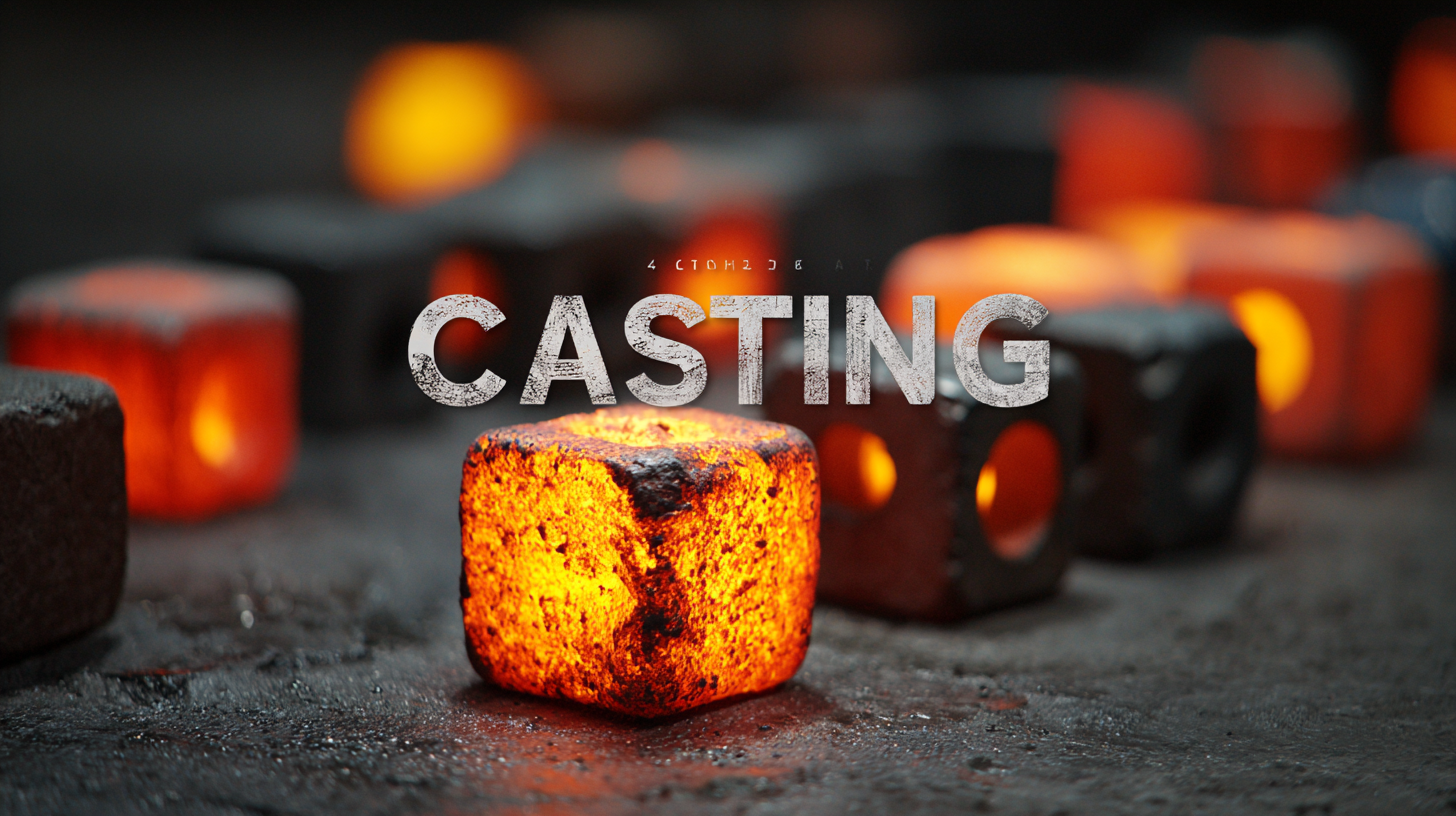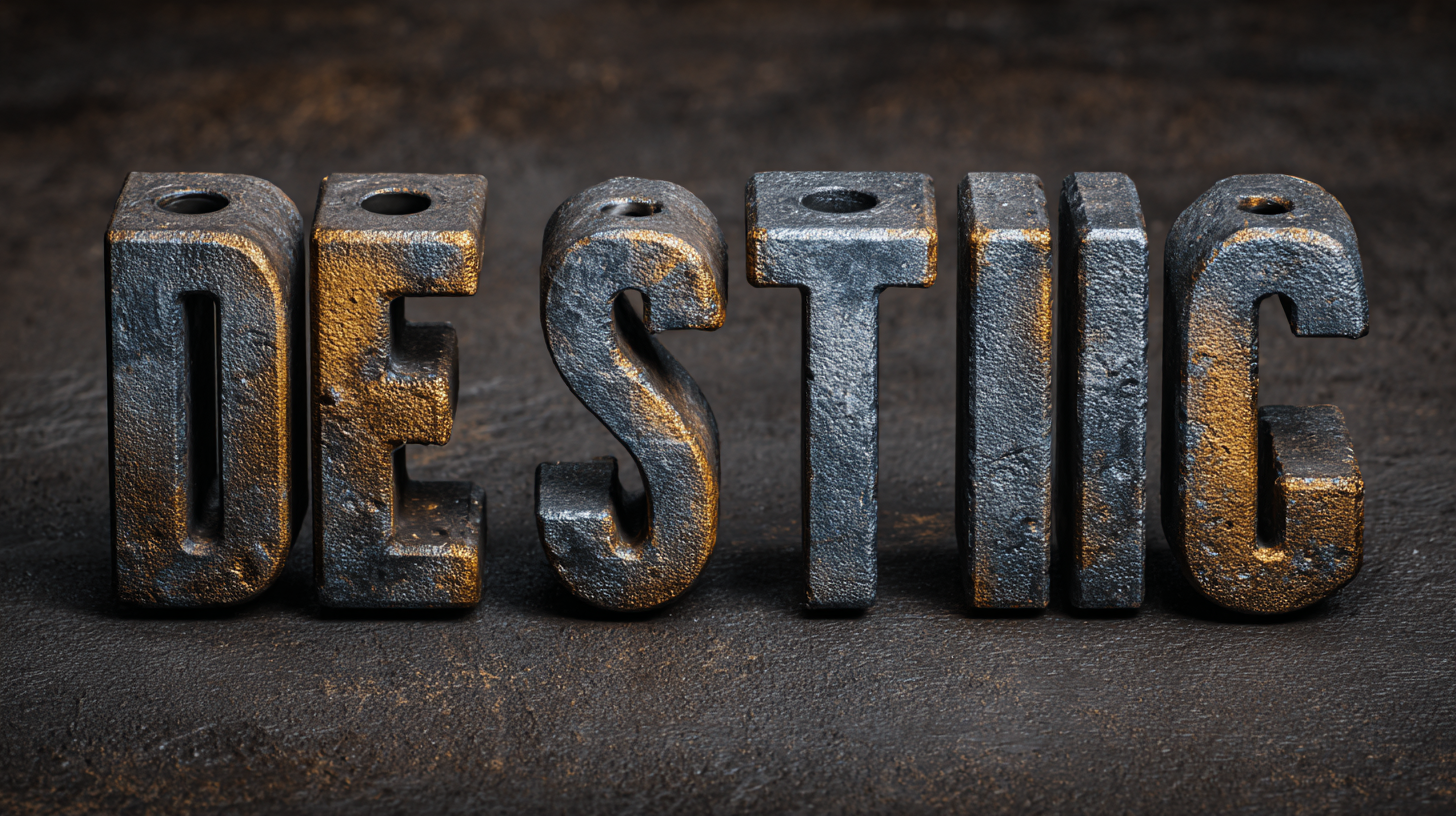Ultimate Guide to Choosing the Best Die Casting Solutions for Your Business
 Die casting is a pivotal manufacturing process that enables businesses to produce complex and precise metal components efficiently. As industries continue to evolve, the global die casting market is projected to reach $20 billion by 2026, growing at a CAGR of 5.3% from 2021 to 2026, according to a recent report by MarketsandMarkets. This growth underscores the increasing demand for lightweight and high-strength materials in sectors such as automotive, aerospace, and electronics.
Die casting is a pivotal manufacturing process that enables businesses to produce complex and precise metal components efficiently. As industries continue to evolve, the global die casting market is projected to reach $20 billion by 2026, growing at a CAGR of 5.3% from 2021 to 2026, according to a recent report by MarketsandMarkets. This growth underscores the increasing demand for lightweight and high-strength materials in sectors such as automotive, aerospace, and electronics.
With an array of die casting solutions available, selecting the right one can significantly impact manufacturing efficiency, cost-effectiveness, and product quality. This guide aims to equip business owners and decision-makers with essential insights and strategies to navigate the selection process, ensuring that their die casting needs align with industry advancements and market trends.
Understanding Die Casting: Key Types and Their Applications
Die casting is a widely used manufacturing process that involves forcing molten metal into a mold to create precise and complex shapes. Understanding the key types of die casting—gravity, high-pressure, and low-pressure—is essential for selecting the right solution for your business. Gravity die casting is ideal for simpler shapes and offers excellent dimensional accuracy, making it suitable for small production runs. High-pressure die casting, on the other hand, excels in creating intricate designs efficiently and is often used for high-volume production in industries such as automotive.
When considering die casting solutions, remember these tips: First, assess the material compatibility. Different die casting processes work better with specific metals—aluminum, zinc, and magnesium are common choices, each offering unique benefits. Second, evaluate your project’s production scale. High-pressure die casting is more cost-effective for larger runs but may not be necessary for smaller quantities. Lastly, think about the post-processing needs; ensure your chosen method aligns with your finishing requirements to minimize additional costs and time.
By focusing on the application of each die casting type, you can make informed decisions that align with your business objectives, helping to streamline production and enhance product quality.
Ultimate Guide to Choosing the Best Die Casting Solutions for Your Business - Understanding Die Casting: Key Types and Their Applications
| Die Casting Type |
Material Used |
Applications |
Advantages |
Disadvantages |
| Hot Chamber Die Casting |
Zinc, Magnesium |
Automotive Components, Electronics |
High Production Rate, Good Surface Finish |
Limited to Low Melting Point Metals |
| Cold Chamber Die Casting |
Aluminum, Copper |
Aerospace Parts, Industrial Equipment |
Versatility in Material, High Strength Parts |
Lower Production Rate Compared to Hot Chamber |
| High Pressure Die Casting |
Zinc, Aluminum |
Consumer Products, Aerospace Components |
High Dimensional Accuracy, Smooth Surfaces |
High Initial Setup Costs |
| Low Pressure Die Casting |
Aluminum, Magnesium |
Automotive Parts, Machinery |
Reduced Porosity, Enhanced Mechanical Properties |
Slower Production Speed |
Evaluating Material Options for Die Casting: Pros and Cons
When it comes to choosing the best die casting solutions for your business, evaluating material options is crucial. Die casting typically employs metals like aluminum, zinc, and magnesium, each with its unique advantages and disadvantages.
For instance, aluminum is lightweight and corrosion-resistant, making it ideal for automotive applications. However, it can be more expensive than other materials. Conversely, zinc offers an excellent surface finish and is cost-effective, but it has lower mechanical properties compared to aluminum.
Tips for selecting the right material include conducting a thorough analysis of your part requirements. Consider factors such as strength, weight, thermal conductivity, and corrosion resistance. Additionally, assess the manufacturing costs and lead times associated with each material, as these can significantly impact your overall production efficiency. Engaging with material specialists can also provide insights that help in making informed decisions.
Finally, it's essential to conduct prototype testing with different materials to gauge their performance in real-world applications. This hands-on approach will provide valuable feedback that can guide you in selecting the most suitable die casting material for your specific needs while optimizing your production process.
Essential Factors to Consider When Selecting Die Casting Providers
Selecting the right die casting provider is crucial to the success of your manufacturing operations.
One of the essential factors to consider is the provider's experience and expertise in the industry. A company with a long-standing track record can offer valuable insights into the latest processes and technologies, ensuring that you receive high-quality results tailored to your specific needs. Don't hesitate to ask for case studies or client references to gauge their capability in handling projects similar to yours.
Another important aspect is the quality of the materials used and the manufacturing processes employed by the provider. Look for a company that utilizes advanced techniques and adheres to strict quality control standards. This can significantly impact the durability and performance of the finished products. Additionally, evaluate their ability to offer various alloy options and customization capabilities, as this flexibility can be key in meeting your project's unique requirements. By considering these factors, you can make an informed decision that aligns with your business goals.
Comparative Analysis of Die Casting Techniques: Cold Chamber vs. Hot Chamber
When exploring die casting techniques, the choice between
cold chamber and
hot chamber processes can significantly impact
manufacturing efficiency and product quality. Cold chamber die casting, commonly used for
high melting point alloys like aluminum and magnesium, involves pouring molten metal into
the die from a separate chamber. This process reduces contamination risk and allows for
better control over the metal's properties, making it ideal for precision components in
industries such as aerospace and automotive. Reports indicate that the global aluminum die
casting market is expected to reach $10.53 billion by 2025,
reflecting a growing preference for cold chamber methods due to their versatility and quality.

On the other hand, hot chamber die casting is more suited
for low melting point metals, such as zinc. This technique enables higher production rates
since the cycle time is shorter, which can lead to increased operational efficiency. According
to a study by ResearchAndMarkets, the hot chamber die casting market is projected to experience
significant growth, driven by the rising demand for lightweight components in various applications,
including consumer electronics and automotive parts. By comparing these two processes, businesses
can strategically select the die casting method that best aligns with their production needs and
material specifications, ultimately influencing their competitiveness in the market.
Real-World Case Studies: Successful Die Casting Solutions Across Industries
Die casting has become an invaluable manufacturing process across various industries, delivering high precision and desirable surface finishes. For instance, a report by Markets and Markets highlights that the global die casting market is projected to reach $80 billion by 2025, with a substantial compound annual growth rate (CAGR) of 7.4%. This growth is driven by the increasing demand for lightweight components in sectors such as automotive and aerospace, where efficiency and performance are paramount.

One notable case study is the use of die casting in the automotive industry. Companies like Ford utilize zinc die casting for producing complex engine components, which enhances strength while reducing weight by up to 30% compared to traditional materials. Similarly, in the electronics sector, companies such as Apple rely on die casting for their product housings to achieve the tight tolerances necessary for sleek design and functionality. These real-world examples illuminate the versatility and effectiveness of die casting solutions, showcasing how businesses can harness this manufacturing technique to gain a competitive edge in their respective markets.







